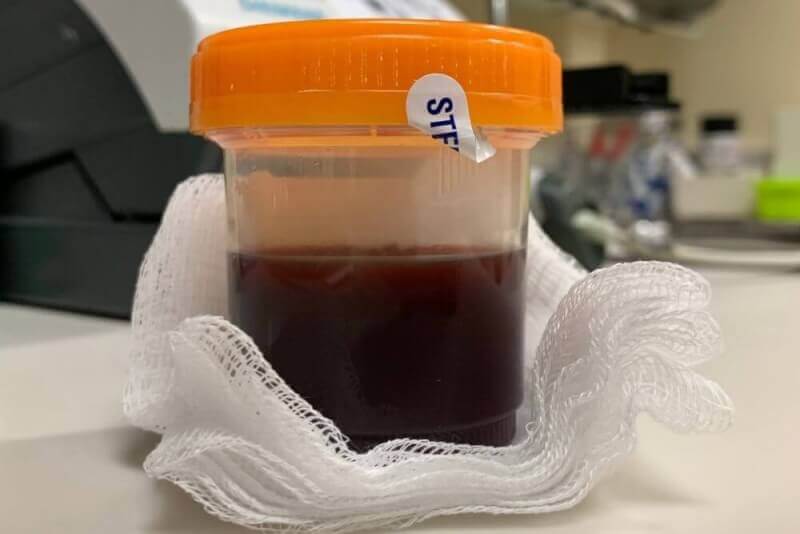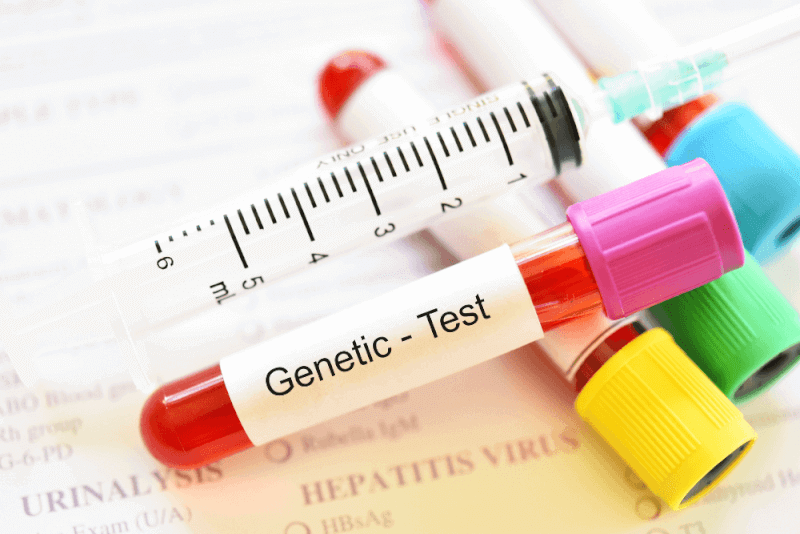What is Alkaptonuria?
Alkaptonuria is a rare autosomal recessive genetic disorder. Basically, problems arise in the metabolism of tyrosine and phenylalanine in the body. Tyrosine and phenylalanine metabolism plays a role in the production of sufficient amounts of the enzyme called homogentisic dioxygenase (HGD) in the body. Enzymes are proteins that allow chemical reactions to take place and the HGD enzyme's job is to break down a toxic substance called homogentisic acid.
When homogentisic acid cannot be broken down, it accumulates in the body and discoloration and fragility of bones and cartilages are observed. It leads to osteoarthritis, especially in the spine and large joints. When homogentisic acid comes into contact with air, it causes urine to turn black, the earliest symptom being blackness in diapers.
Diagnostic Criteria for Alkaptonuria
Physical examination, patient history and various tests should be performed to diagnose alkaptonuria. Urinalysis is the most commonly used method. When alkaptonuria is suspected, the patient is asked to collect urine for 24 hours. The diagnosis is made by examining the amount of homogentisic acid in the urine.
Since alkaptonuria is a genetic disorder, genetic testing is performed to identify the presence of a recessive mutation in the HGD gene. Genetic testing is important to make a definitive diagnosis. X-rays or other imaging methods are used to examine bone and joint findings. Various scoring systems are also used to evaluate clinical findings.
Symptoms of Alkaptonuria
The most important symptom of alkaptonuria in infancy is dark urine. Homogentisic acid causes urine to turn black when exposed to air for several hours and can be seen in diapers. If this symptom is missed, alkaptonuria may not be recognized until adulthood.
Until the patient reaches his or her 30s, there are usually no other noticeable symptoms, but as the patient gets older, the following symptoms appear;
- Inflammation and pain in the joints
- Darkening of the ears or other areas of the skin
- Black or dark colored earwax
- Dark spots on the white part of the eye
- Appearance of a blue or brownish color on the nails
- Shortness of breath due to hardening of the bones around the lungs
- Dark urine
- Back pain
- Low back pain and lumbar stiffness
- Heart diseases due to accumulation of homogentisic acid around the heart valves
- Symptoms such as kidney, bladder or prostate stones are seen in alkaptonuria.
Alkaptonuria Treatment Methods
Although there is no definitive treatment method for alkaptonuria, treatment is usually aimed at reducing the patient's symptoms. Medications and changes in the patient's lifestyle aim to reduce the symptoms of the disease.
- In alkaptonuria, drugs with the active substance nitisinone are preferred medically. There are ongoing studies showing that nitisinone reduces the level of homogentisic acid in the body.
- For people with involvement of the joints and spine, relief is provided with painkillers. In advanced cases, joint replacement can be performed with surgical operations.
- Physiotherapy support to strengthen muscles and joints improves the patient's quality of life.
- Regular light exercise helps to reduce the pain of the disease. Activities that reduce stress levels such as yoga, pilates, cycling and walking can be preferred.
- Surgery may be necessary in patients with involvement of heart valves or heart vessels.
- The use of vitamin C slows down calcification in some patients and reduces the dark color of urine.
- Reduce consumption of foods rich in tyrosine and phenylalanine, such as milk, meat and eggs.
Alkaptonuria Diet
People with alkaptonuria should avoid foods containing excess tyrosine and phenylalanine. Patients should pay attention to their diet as there are problems in tyrosine and phenylalanine metabolism. Meat, milk and dairy products, eggs, nuts, legumes, bakery products, packaged foods are foods rich in phenylalanine. Patients should avoid these foods or consume as little as possible.
Fish, chicken, soy products, sunflower seeds, pumpkin seeds, nuts are also rich in tyrosine. The treatment process will be difficult in patients who consume these foods uncontrolled and without restrictions. Eating according to the recommended diet helps to reduce the patient's symptoms.







